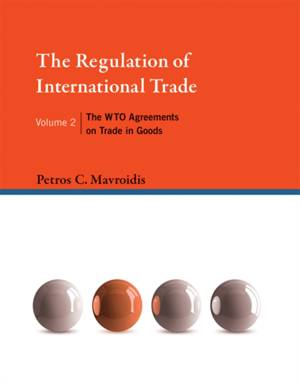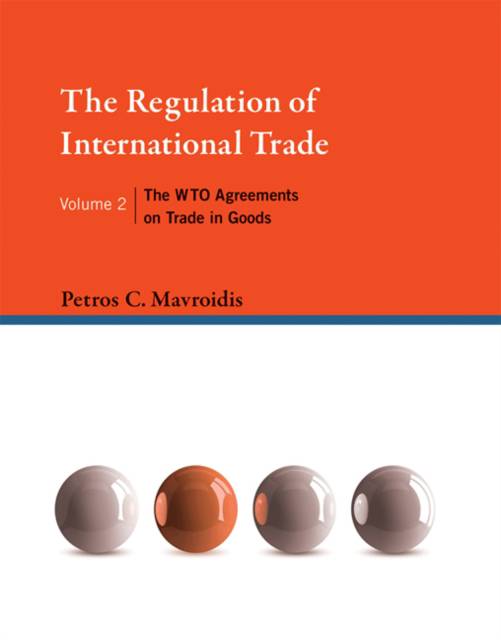
- Afhalen na 1 uur in een winkel met voorraad
- Gratis thuislevering in België vanaf € 30
- Ruim aanbod met 7 miljoen producten
- Afhalen na 1 uur in een winkel met voorraad
- Gratis thuislevering in België vanaf € 30
- Ruim aanbod met 7 miljoen producten
The Regulation of International Trade, Volume 2
The Wto Agreements on Trade in Goods
Petros C MavroidisOmschrijving
The General Agreement on Tariffs and Trade (GATT) has extended its institutional arsenal since the Kennedy round in the early 1960s. The current institutional design is the outcome of the Uruguay round and agreements reached in the ongoing Doha round (begun in 2001). One of the institutional outgrowths of GATT is the World Trade Organization (WT0), created in 1995. In this book, Petros Mavroidis offers a detailed examination of WTO agreements regulating trade in goods, discussing legal context, policy background, economic rationale, and case law.
Each chapter examines a given legal norm and its subsequent practice. In particular, he discusses agreements dealing with customs clearance; "contingent protection" instruments, which allow WTO members unilaterally to add to the negotiated amount of protection when a certain contingency (for example, dumping) has occurred; TBT (Technical Barriers to Trade) and SPS (Sanitary and Phyto-sanitary Measures) agreements, both of which deal with such domestic instruments as environmental, health policy, or consumer information; the agreement on Trade Related Investment Measures (TRIM); sector-specific agreements on agriculture and textiles; plurilateral agreements (binding a subset of WTO membership) on government procurement and civil aviation; and transparency in trade relations. This book's companion volume examines the GATT regime for international trade.
Specificaties
Betrokkenen
- Auteur(s):
- Uitgeverij:
Inhoud
- Aantal bladzijden:
- 888
- Taal:
- Engels
- Reeks:
Eigenschappen
- Productcode (EAN):
- 9780262029995
- Verschijningsdatum:
- 22/04/2016
- Uitvoering:
- Hardcover
- Formaat:
- Genaaid
- Afmetingen:
- 183 mm x 234 mm
- Gewicht:
- 1496 g

Alleen bij Standaard Boekhandel
Beoordelingen
We publiceren alleen reviews die voldoen aan de voorwaarden voor reviews. Bekijk onze voorwaarden voor reviews.









